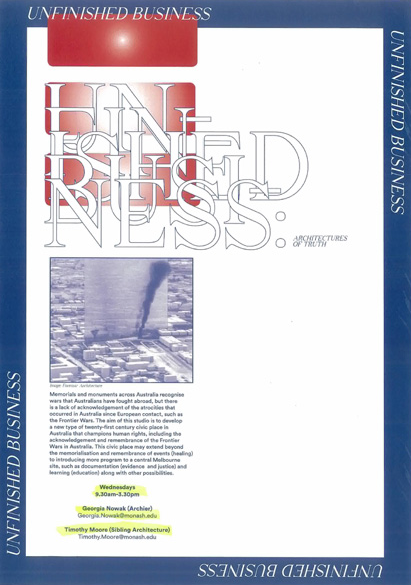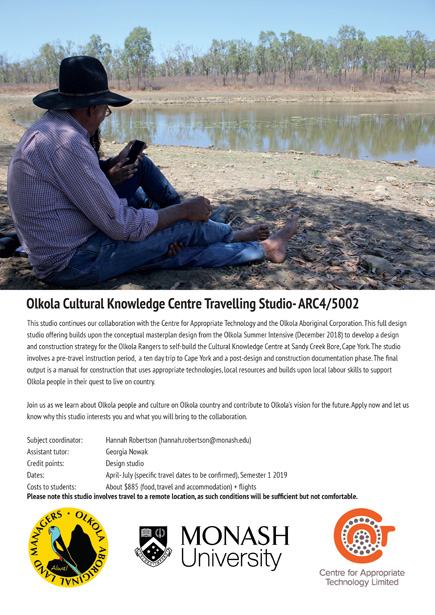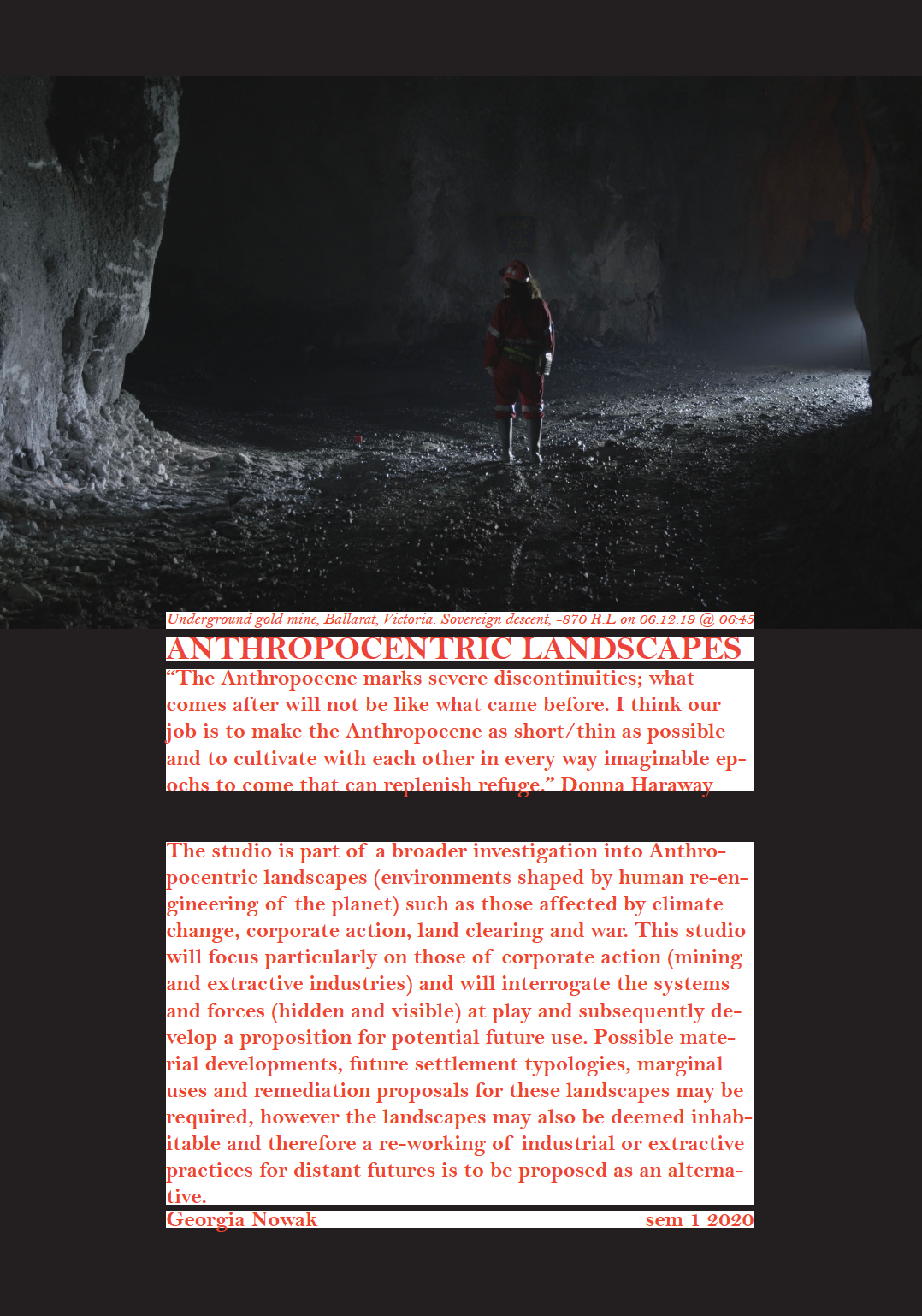Teaching within the School of Art, Design and Architecture
2017 - current
Research and creative led design studio’s for final year Bachelors of Architecture and Masters of Architecture students.






Hidden Ecologies
Anthropocentric Landscapes
The studio is part of a broader investigation into Anthropogenic landscapes (environments shaped by human re-engineering of the planet) such as those affected by climate change, corporate action, land clearing and war. This studio will focus particularly on those of corporate action (mining and extractive industries) and will interrogate the systems and forces (hidden and visible) at play and subsequently develop a proposition for potential future use. Alternate settlement typologies, marginal uses and remediation proposals for these landscapes will be developed for both near and distant futures so that these landscapes may remain a viable host for multispecies life. Digital media and film will be used as a device to communicate individual propositions in the virtual realm. Students will be offered a framework to generate speculative ideas at scale and will develop skills to engage in conversation surrounding the climate crisis and its entanglement to architecture.
-
Unfinished Business with Timothy Moore.
Memorials and monuments across Australia recognise wars that Australians have fought abroad, but there is a lack of acknowledgement of the atrocities that occurred in Australia since European contact, such as the Frontier Wars. The aim of this studio is to develop a new type of twenty-first century civic place in Australia that champions human rights, including the acknowledgement and remembrance of the Frontier Wars in Australia. This civic place may extend beyond the memorialisation and remembrance of events (healing) to introducing more program to a central Melbourne site, such as documentation (evidence and justice) and learning (education) along with other possibilities.
-
Earthly Matter with Laura Harper.
This studio explores the potential of earthly matter (stone, clay, mud, sand..) to influence wider character and organisation in the urban environment. Students will work between scales: on the one hand investigating how extractive industries and the location of quarries and claypits have helped form and organise the urban environment; on the other, exploring the architectural potential of stone and masonry construction to design details, construction systems and building typologies including using the emerging technologies of robotic carving and 3d printing.
Students will develop a critical reading of the environmental, economic and spatial impact of extractive industries (mining) on the urban environment and draw on this to propose a future scenario for an extractive industry West Footscray in Melbourne. Students will plan the relationship of this new industry to the urban environment over time; design the materials, products and construction technologies which this industry would support; and envisage the formal and aesthetic impact on the character of buildings and infrastructure.
-
Olkola Cultural Knowledge Centre with Hannah Robertson.
This studio continues our collaboration with the Centre for Appropriate Technology and the Olkola Aboriginal Corporation. This full design studio offering builds upon the conceptual masterplan design from the Olkola Summer Intensive (December 2018) to develop a design and construction strategy for the Olkola Rangers to self-build the Cultural Knowledge Centre at Sandy Creek Bore, Cape York. The studio involves a pre-travel instruction period, a ten day trip to Cape York and a post-design and construction documentation phase. The final output is a manual for construction that uses appropriate technologies, local resources and builds upon local labour skills to support Olkola people in their quest to live on country.
-
Anthropocentric Landscapes
The studio is part of a broader investigation into Anthropogenic landscapes (environments shaped by human re-engineering of the planet) such as those affected by climate change, corporate action, land clearing and war. This studio will focus particularly on those of corporate action (mining and extractive industries) and will interrogate the systems and forces (hidden and visible) at play and subsequently develop a proposition for potential future use. Alternate settlement typologies, marginal uses and remediation proposals for these landscapes will be developed for both near and distant futures so that these landscapes may remain a viable host for multispecies life. Digital media and film will be used as a device to communicate individual propositions in the virtual realm. Students will be offered a framework to generate speculative ideas at scale and will develop skills to engage in conversation surrounding the climate crisis and its entanglement to architecture.
-
Unfinished Business with Timothy Moore.
Memorials and monuments across Australia recognise wars that Australians have fought abroad, but there is a lack of acknowledgement of the atrocities that occurred in Australia since European contact, such as the Frontier Wars. The aim of this studio is to develop a new type of twenty-first century civic place in Australia that champions human rights, including the acknowledgement and remembrance of the Frontier Wars in Australia. This civic place may extend beyond the memorialisation and remembrance of events (healing) to introducing more program to a central Melbourne site, such as documentation (evidence and justice) and learning (education) along with other possibilities.
-
Earthly Matter with Laura Harper.
This studio explores the potential of earthly matter (stone, clay, mud, sand..) to influence wider character and organisation in the urban environment. Students will work between scales: on the one hand investigating how extractive industries and the location of quarries and claypits have helped form and organise the urban environment; on the other, exploring the architectural potential of stone and masonry construction to design details, construction systems and building typologies including using the emerging technologies of robotic carving and 3d printing.
Students will develop a critical reading of the environmental, economic and spatial impact of extractive industries (mining) on the urban environment and draw on this to propose a future scenario for an extractive industry West Footscray in Melbourne. Students will plan the relationship of this new industry to the urban environment over time; design the materials, products and construction technologies which this industry would support; and envisage the formal and aesthetic impact on the character of buildings and infrastructure.
-
Olkola Cultural Knowledge Centre with Hannah Robertson.
This studio continues our collaboration with the Centre for Appropriate Technology and the Olkola Aboriginal Corporation. This full design studio offering builds upon the conceptual masterplan design from the Olkola Summer Intensive (December 2018) to develop a design and construction strategy for the Olkola Rangers to self-build the Cultural Knowledge Centre at Sandy Creek Bore, Cape York. The studio involves a pre-travel instruction period, a ten day trip to Cape York and a post-design and construction documentation phase. The final output is a manual for construction that uses appropriate technologies, local resources and builds upon local labour skills to support Olkola people in their quest to live on country.
-